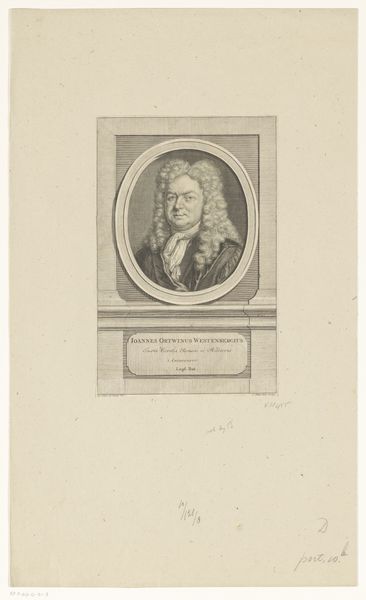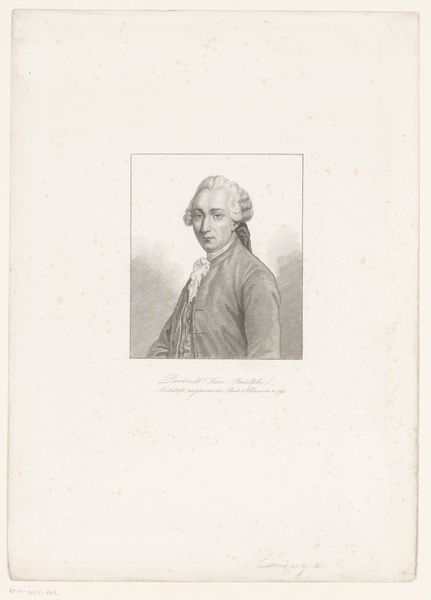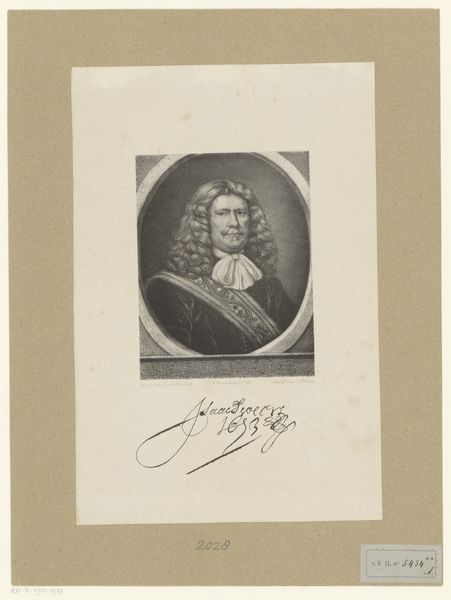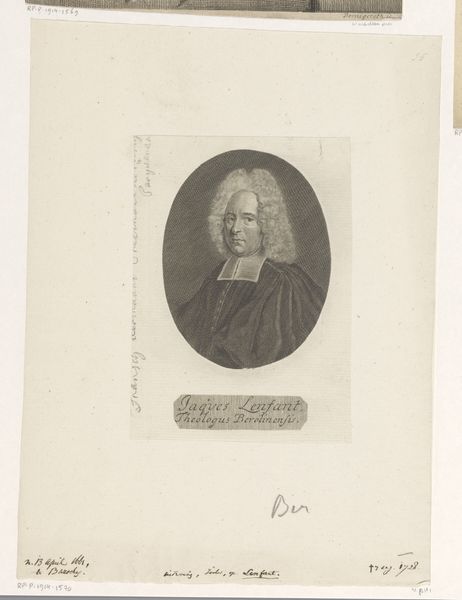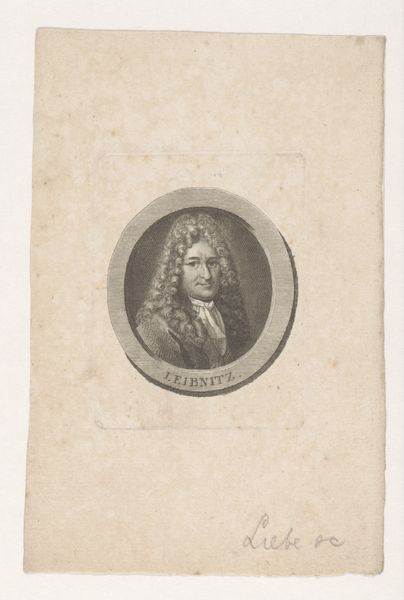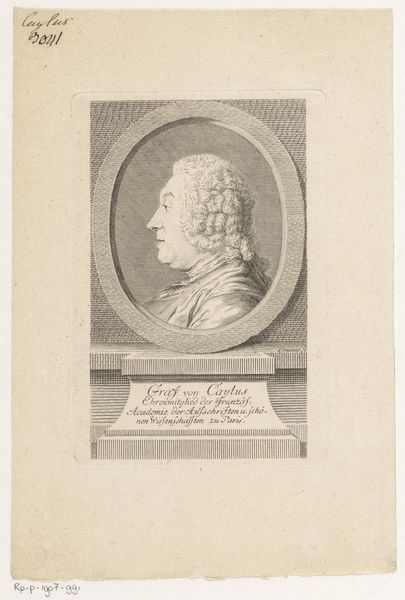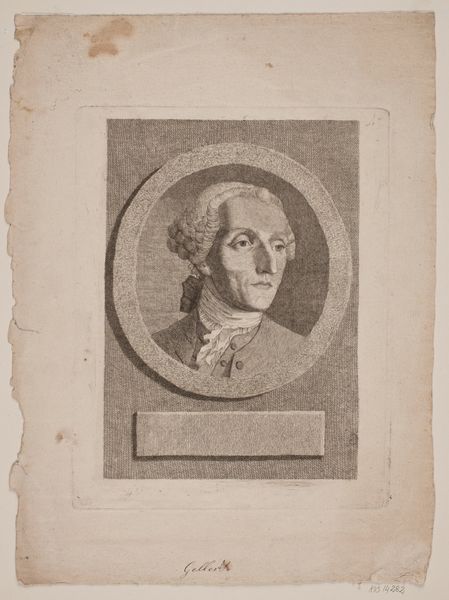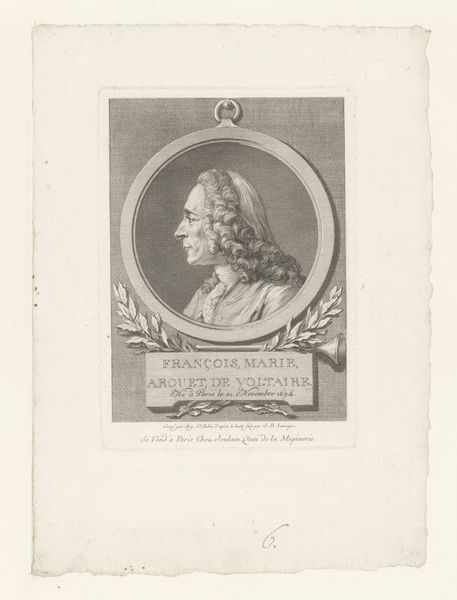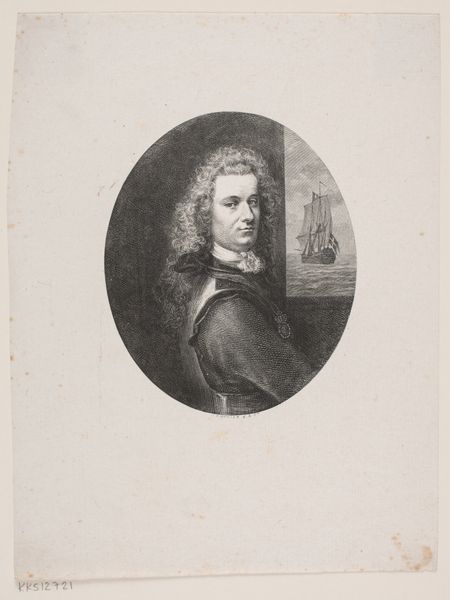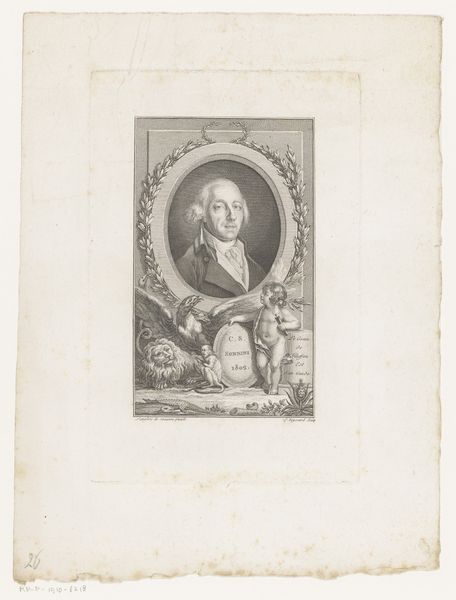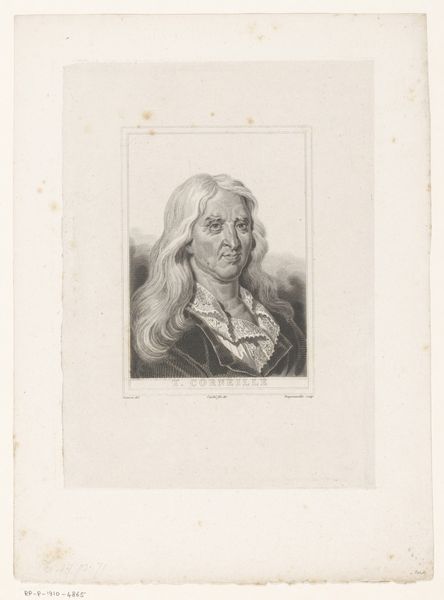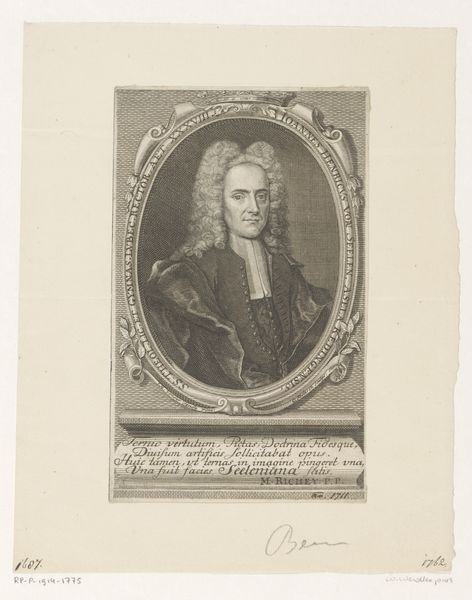
engraving
#
portrait
#
neoclacissism
#
aged paper
#
parchment
#
old engraving style
#
history-painting
#
academic-art
#
engraving
Dimensions: height 232 mm, width 186 mm
Copyright: Rijks Museum: Open Domain
Curator: What strikes me immediately about this engraving is its austerity. The four portraits of Isaac Newton, presented almost like a series of studies, feel formal, distant, almost…scientific. Editor: Precisely! This engraving, titled "Vier portretten van Sir Isaac Newton," by Johann Heinrich Lips, created around 1778, speaks to the scientific reverence of the Enlightenment. The clean lines, the rational composition; it reflects the Neoclassical ideal, doesn’t it? A visual manifestation of reason and order. Curator: I see that, of course. But those controlled lines also carry a sense of…limitation, wouldn't you agree? Each oval frame seems to contain Newton, to box him in. Perhaps a reflection of how society struggles to truly grasp genius. Who decides which image makes history? Which angle best portrays the persona of Newton, if any? Editor: An interesting point. In terms of artistic interpretation, the multiple portrayals provide different viewpoints into the same man, but in looking at it in historical context, the image comes at a fascinating point, decades after Newton’s death. It's a carefully constructed image, serving a public function— to solidify his legacy. Curator: The selection of images creates a dialogue with today, reflecting questions regarding which scientists, which faces are given the stage of history, and what do the angles of power leave out of the picture? Who had the power of commissioning these engravings and disseminating Newton's "face" around the world? Editor: Well, the piece currently resides in the Rijksmuseum. Public institutions play a major role in curating and shaping that narrative that you discuss, they really do shape the cultural understanding through choices about representation. And let's also acknowledge the role of printed images at this time: How did their circulation create new audiences and impact understandings of scientific achievements? Curator: All this raises critical questions about who gets remembered and how, right? Which perspectives become history. And by showcasing them in a space such as the Rijksmuseum, do we not keep repeating those old patterns and narratives? Editor: Perhaps... But these institutions provide us with a chance to study those past patterns, right? I’d say this work prompts essential discussions around visibility, legacy, and who writes the narratives of scientific greatness. Curator: Exactly. And by digging into these conversations, we ensure more inclusive historical engagement.
Comments
No comments
Be the first to comment and join the conversation on the ultimate creative platform.
